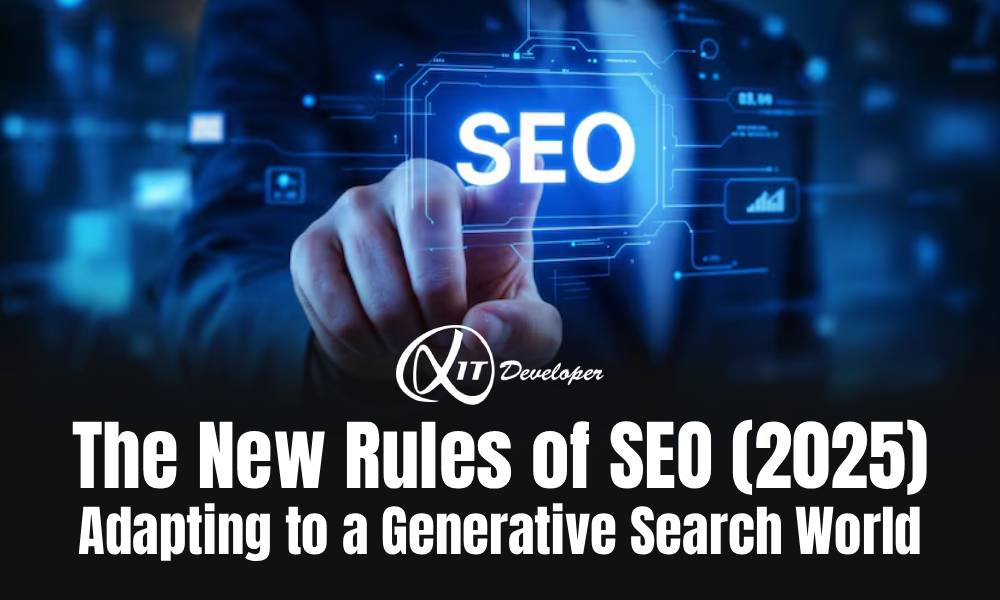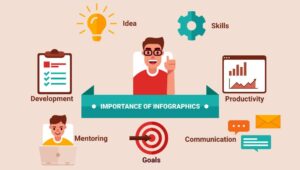The digital landscape is a place of constant change, and in 2025, that evolution has reached a new velocity. The rules of search engine optimization (SEO) are being rewritten, not by a single algorithm update, but by a fundamental shift in how people search and how search engines respond. At the heart of this revolution are three powerful forces: Artificial Intelligence (AI), voice search, and visual search. To succeed in this new era, SEO professionals and content creators must move beyond traditional keyword-stuffing and embrace a more holistic, user-centric approach.
How Is AI Reshaping SEO Strategies in 2025?
AI is no longer just a buzzword; it’s a transformative force that has already become the new foundation of search. In 2025, AI is not only powering the search engines themselves but also the tools we use to optimize for them. This shift is marked by a move from simple keyword matching to a deeper understanding of user intent and context.
Here’s how AI is reshaping SEO:
- AI Overviews and Zero-Click Searches: Google’s AI Overviews, powered by its Search Generative Experience (SGE), are providing concise, AI-generated answers directly at the top of the search results page (SERP). This has led to an increase in “zero-click” searches, where users find the answer they need without ever visiting a website. The challenge for SEO is to create content that is so authoritative and well-structured that it gets featured in these AI overviews.
- Content Generation and Optimization: AI tools are now integral to the content creation workflow. They can generate outlines, research topics, and even draft entire articles. However, a purely AI-generated piece of content is unlikely to rank well. The key is to use AI as an assistant to scale your content production while adding a human touch—original data, personal anecdotes, and unique insights that AI cannot replicate.
- Predictive Analytics and User Behavior: AI-powered SEO tools are capable of analyzing vast amounts of data to predict future search trends and user behavior. This allows for a proactive approach to content creation, where you can identify and target emerging queries before your competitors do. AI also helps analyze user signals like dwell time and bounce rate, which are now more important than ever for ranking.
The relationship between AI and human expertise is a crucial one. While AI provides efficiency and scale, human creativity and judgment are essential for creating the kind of high-quality, trustworthy content that Google’s algorithms now prioritize. The best strategy is a hybrid one, where AI and human intelligence work together to achieve superior results.
Will Voice Search Dominate the Next Era of SEO?
Voice search is on a trajectory to become a dominant force in the coming years. By 2025, a significant portion of all searches are conducted through voice-activated devices like smartphones and smart speakers. This shift has profound implications for SEO, as voice queries are fundamentally different from text-based searches.
The key differences are:
- Conversational Language: People speak differently than they type. Voice queries are longer, more conversational, and often phrased as questions.
- Long-Tail Keywords: Instead of typing “best running shoes,” a user might ask, “What are the best running shoes for flat feet in 2025?” This makes optimizing for long-tail, question-based keywords more critical than ever.
- Immediate Answers: Voice search users expect quick, direct answers. This means your content should be structured to provide concise, easy-to-digest information that can be easily picked up by a voice assistant. Creating dedicated FAQ sections on your website is an excellent strategy for this.
- Local SEO: Voice search is heavily used for local queries, such as “find a coffee shop near me.” Businesses must have their local SEO game on point, with accurate and consistent information across platforms like Google Business Profile.
Optimizing for voice search is a matter of thinking like a user speaking a query, not typing one. The goal is to be the featured snippet or the direct answer that a voice assistant delivers.
What Role Does Visual Search Play in the Future of SEO?
Visual search is another burgeoning area that is reshaping the search landscape. With tools like Google Lens and Pinterest Lens, users can search for information using an image instead of text. This is particularly relevant for e-commerce, but its impact is expanding across many industries.
To optimize for visual search, consider these points:
- High-Quality Images: The foundation of visual search is, of course, the images themselves. Use high-resolution, clear, and compelling visuals.
- Image Optimization: This is where traditional SEO practices get a visual upgrade. Use descriptive file names, compelling alt text, and captions that accurately describe the image content and its context.
- Structured Data: Implementing schema markup for images and products helps search engines understand the content and purpose of your visuals, increasing their chances of appearing in visual search results.
- User-Generated Content: Encourage users to share their own images of your products or services. This not only builds social proof but also provides a rich source of visual content that can be indexed and ranked.
Visual search represents an opportunity to engage users in a new way and drive traffic from platforms that were once considered separate from the SEO sphere.
Are Traditional Keywords Losing Importance in 2025 SEO?
The short answer is no, but their role is evolving. In 2025, it’s not about a simple keyword but about the intent behind the keyword. Search engines, powered by AI and Natural Language Processing (NLP), are now sophisticated enough to understand the context and purpose of a query, even if the exact keywords aren’t present.
This means you should shift your focus from single keywords to topical authority and semantic SEO.
- Topical Clusters: Instead of creating a single page for a single keyword, build a “topic cluster.” This involves creating a cornerstone “pillar” page that broadly covers a topic and then linking it to multiple “cluster content” pages that delve into specific, related subtopics. This shows search engines that you are a comprehensive authority on a subject.
- User Intent: Understand what the user wants to do when they type a query. Are they looking for information (informational intent), trying to buy something (transactional intent), or navigating to a specific website (navigational intent)? Your content must align with this intent.
- Long-Tail and Conversational Keywords: As mentioned with voice search, long-tail and question-based queries are more valuable than ever. They have lower competition and higher conversion rates because they indicate a more specific need.
Traditional keyword research is still the starting point, but the new rules of SEO demand a deeper, more nuanced understanding of how people search.
How Do Google’s Algorithm Updates Change SEO Rules This Year?
Google’s algorithm updates in 2025 are less about a single, dramatic change and more about a continuous refinement towards one core goal: to reward high-quality, helpful, and user-centric content. The emphasis on E-E-A-T (Experience, Expertise, Authoritativeness, and Trustworthiness) has never been stronger.
Key algorithm changes and their implications:
- Emphasis on E-E-A-T: Google is getting better at identifying content written by genuine experts with real-world experience. To demonstrate this, you should include author bios with credentials, link to authoritative sources, and showcase your brand’s unique expertise.
- Core Web Vitals: These metrics—LCP (Largest Contentful Paint), INP (Interaction to Next Paint), and CLS (Cumulative Layout Shift)—are more important than ever. A fast, stable, and responsive website is a non-negotiable ranking factor.
- AI-Driven Content Audits: Google’s algorithms can now better detect and penalize low-quality, AI-generated content that lacks originality and value. This reinforces the need for human oversight and the addition of unique, expert-driven insights to any AI-assisted content.
- Zero-Click and AI Overviews: As AI becomes the default interface for information, Google’s algorithms are now prioritizing content that is well-structured and can be easily summarized in an AI overview.
In 2025, the new rules of SEO are about embracing a more human, helpful, and technologically-aware approach. The focus has shifted from “How do I get Google to notice me?” to “How do I provide the best possible experience for my users?” If you can answer that question, you will be well-positioned to succeed in the ever-evolving world of search.




